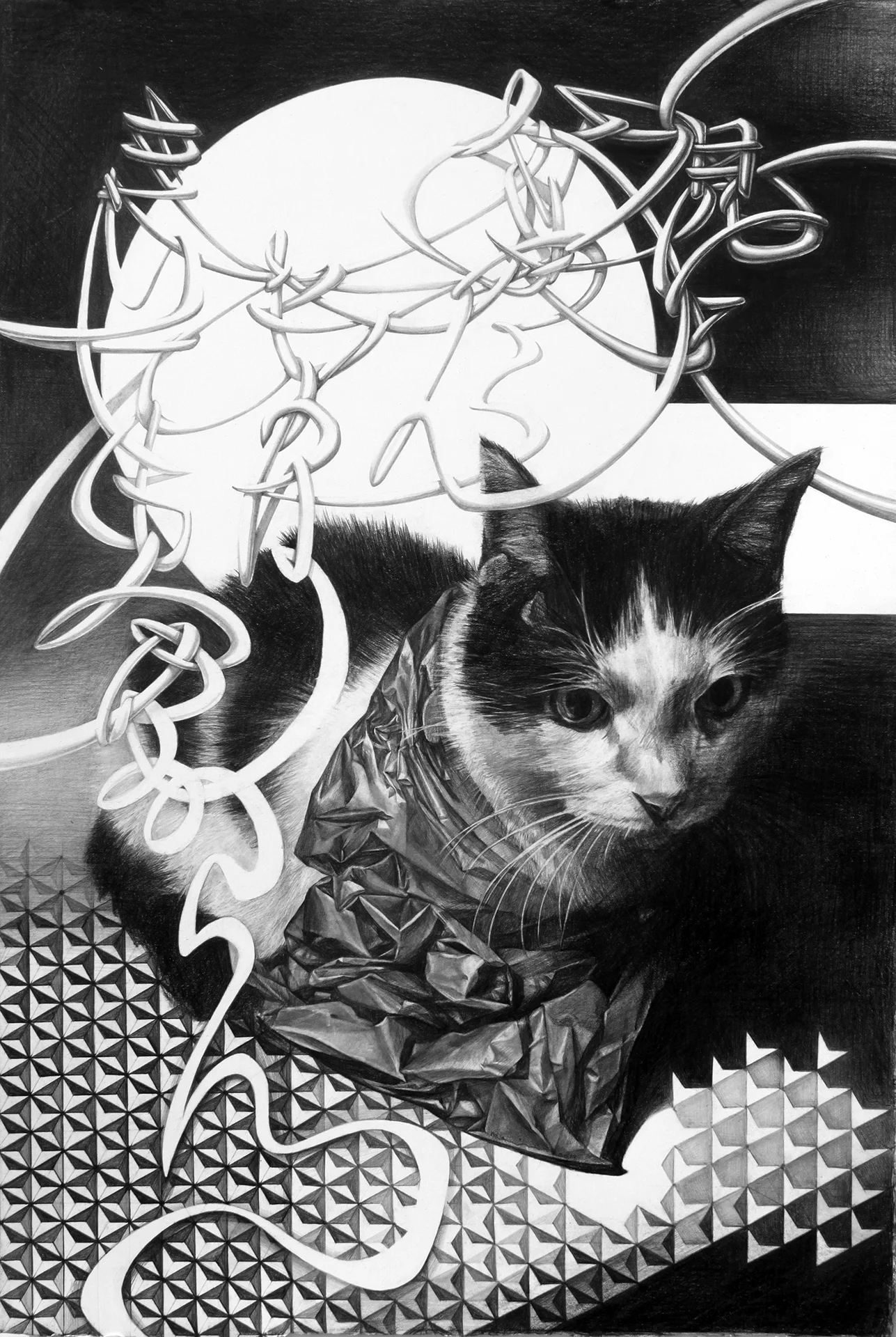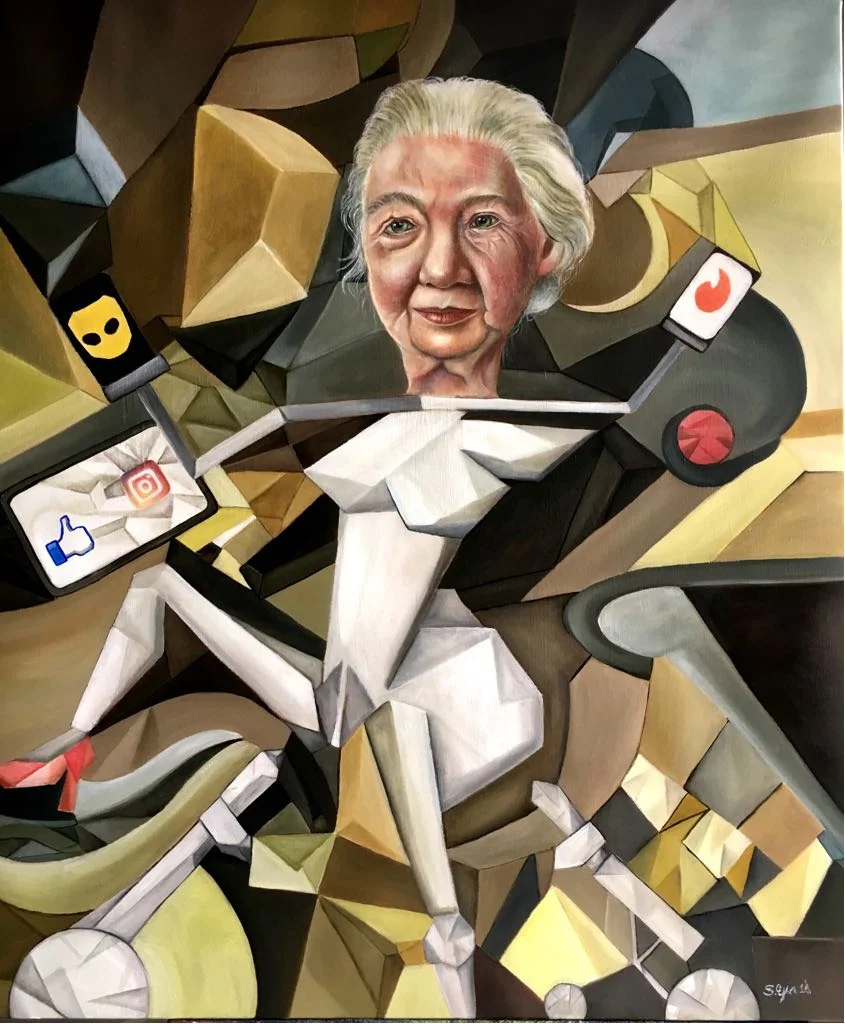Daniel Richter was born in 1962 in Eutin (Germany). Today, he lives and works in Berlin. The artist has shaped painting in Germany since the 1990s as few others have done. In his large-scale oil paintings, Richter dovetails set pieces of art history, mass media and pop culture into idiosyncratic, narrative pictorial worlds.
Amir H. Fallah
Amir H. Fallah is an artist living and working in Los Angeles, CA. Amir received his B.F.A. from The Maryland Institute College of Art and his M.F.A from UCLA in 2005. He has exhibited both nationally and internationally. Exhibits include shows at The Nerman Museum, Weatherspoon Art Museum, The Sharjah Biennial 2009, LA Louver, The Third Line, Gallery Wendi Norris, Charlie James Gallery, Sherry Leedy Contemporary Art, 18th Street Art Center, Cherry And Martin, Frederieke Taylor gallery, Mary Goldman Gallery among others.
Dayana Sharon Marconi
Dayana Sharon Marconi is an Italian artist based in Rome. In 2012 she moved to London and then to China and subsequently worked and travelled across Asia, Europe and the USA creating photographic projects with the aim of exploring different cultures and embracing diversity. She achieved a BA in Intercultural Studies at the University of Trieste in Italy, and she is currently enrolled as MA Photography student at Falmouth University, Cornwall, UK.
Andy Dixon
Andy Dixon is hyper-aware of art’s relationship with money. Signifiers of wealth abound in his large acrylic paintings, which take as their subjects stately lords, reclining nudes, ornate ballrooms, bathing beauties, and prominent paintings of the aforementioned motifs. Borrowing content from Renaissance art, Flemish still lifes, and Google Image searches of "most expensive vases", his subject matter is selected on the basis of public expectation of what an expensive painting should look like.
Carlos Ramirez
My work is a visual record of the world around me; capturing those moments that have become rooted in my memory. I am not interested in replicating nature, but rather the bits and pieces that have struck a cord with me. I tend to work large, starting with bold black ink sketches that reference organic shapes. I then obscure parts with multiple layers of broken color.
RENATE POLZER
Born 1947 in Bruck a.d.Mur, Austria, Renate Polzer was working 20 years as a free lance artist and organizor of cultural events in southern Styria. She studied History of Arts on the Karl-Franzens University in Graz and published her diploma thesis as a book „Horst Reichle, Maler und Graphiker“, Biberacher Verlagsdruckerei.
Hikari Shimoda
Sparkling and sweet, Hikari Shimoda’s work is at once enchanting and disarming, portraying a world where cuteness and horror coexist. Based in Nagano, Japan, Shimoda first studied illustration at the prestigious Kyoto Saga University of Art and Aoyama Juku School before beginning her career as a professional contemporary artist in 2008. Soon after, she was selected for her first solo exhibition at Motto Gallery in Tokyo and has since held exhibitions in galleries worldwide, including Japan, the United States, Canada, and Europe.
Interview with Ana Nobre
Ana Nobre was born in Lisbon, 1979. Graduated in Fine Arts at Art and Design University of Caldas da Rainha. Currently teaches Fine Arts classes and workshops. In 2014 moved to Algarve, Lagoa, where she has further explored her own art and participated in numerous Artistic Projects.
Paul Kremer
Paul Kremer was born in 1971 and is an American artist who lives and works in Houston, Texas. His style can be described as a graphical interpretation of Color Field painting, an abstract style that emerged in New York City during the 1940s and 1950s; and Minimalism, which has its origins in various art and design movements. His work could be seen in numerous group and solo shows. A range of artworks is held in private collections around the cities of New York, Los Angeles, Miami, Houston, Austin, Aspen, Norfolk, Birmingham, Hong Kong, Cannes, Toronto, and Lima.
Interview with Kumari Nahappan
Kumari Nahappan is a prominent artist in the region of Southeast Asia; her practice encompasses inter-disciplinary genres, painting, sculpture and installations. She has forged a reputation for effectively reconciling the language of “international contemporary art” with her own vocabulary and developing a visual identity that is decisively shaped by her cultural roots and beliefs.
Interview with Montserrat Martinez
How would you describe yourself and your artwork? Well... Montserrat is a natural curious person, she’s always looking for inspiration and new adventures, always creating something in her mind... she can be an obsessive person when she discovers something new for her Art.
Christian Roeckenschuss
Christian Roeckenschuss studied at the Academy of Fine Arts Dresden (vocals and piano) in 1949/50. After relocating to Berlin-West for political and ideological reasons, Roeckenschuss continued his studies at the College of Fine Arts (1951-1957). They are based on the abstract avant-garde of the 1910s to the 1930s and on the clear forms of Bauhaus and De Stijl. Between 1950 and 1958, study trips and the search for his own formal idiom took him to many countries worldwide. Early tendencies of his art concept are recognizable. The first small-scale oil-chalk designs with clear geometrical shapes were created in 1956.
Becker Schmitz
It is no easy task to describe the extremely heterogeneous work of Becker Schmitz in a few brief sentences. First of all, it is not possible to say clearly whether the work of the Duisburg-based artist is to be classified as “painting”, “installation” or “site-specific intervention”. He takes great pleasure in hopping from one genre to the next and refuses all one-dimensional, constricting categorizations.
Kais Salman
As one of Syria's foremost expressionist painter Salman uses satire to subvert the normalisation of greed, narcissism and ideological extremism that is rapidly defining our era. Salman has sought to reflect the psychological violence that when excess becomes rationalised and accepted by societies, political corruption,consumerism,cosmetic surgery, religious fanaticism,imperialism and the voyeurism of the digital age have all served as topics of Salman carnivalesque compositions.
Mayuko Ono Gray
My works evolve around my strong interest in the existence of physical body, which I contemplate through art making integrating both Eastern and Western aesthetics and techniques. The works consist of Japanese writings intertwined into one strand, which is a metaphor for life. Working in graphite, I intuitively draw the Japanese calligraphy- stretching, weaving, and changing it- until the composition demands the meticulous solidification of mass, light, and shadow.
Conrad Roset
Conrad Roset spent the first part of his 29 years in Terrassa, his native city, among boxes of crayons, felt-tip pens and notebooks; the other part in Barcelona, surrounded by paints, moleskine notebooks, muses, colored pencils, and in the company of his gray cat. Drawing has been his passion and a constant feature in his life, since he played with his brother at drawing everything they liked until, years later, he draw inspiration from women to create the Muses, his most personal collection. “I search the beauty the body exudes, I like drawing the female figure.”
Interview with Suzi Fadel Nassif
Lebanese born, Suzi Fadel Nassif, is a famed contemporary artist whose creative mind springs to life, artwork of intriguing mobility, wonder and emotional resonance. Naturally gifted from an early age, Suzi was determined to reach the pinnacle of her artistry. Driven by the artistic expressions of Salvador Dali, she developed a keen eye for minute details, analyzing colors and texture. Journeying into groundbreaking abstract impressionism and surrealism, she gains inspiration from the interconnectedness of people from different walks of life, cultural diversity, mysteries of existence and the semblance of emotions.
Interview with Gia Strauss
Gia Strauss was born in Jerusalem to a Swiss German mother and a South African father on February 6 1988. Growing up in Israel during the Intifada, she endured a particularly difficult childhood. She then moved with her mother and siblings to Zanzibar where she spent a number of years. Returning to Israel she attended drama school in Tel Aviv, before moving to London in 2009 where she began to develop her talents as an artist focusing on painting, filmmaking and music (piano).
Anna Valdez
As a visual artist with an academic background in anthropology, and video, I view artists as cultural producers. In my work, I attempt to combine these practices into a specific investigation that cultivates not only personal identity, but also cultural meaning. Currently, I am working on various narratives that explore my own traditions and history through a visual format. This process has led me to rely on photographs, stories, family recipes, horticulture, and the tradition of crafting as something concrete in order to construct my autobiography. I consider this examination to be a rite of passage into a globalized society while simultaneously finding my niche within.
Robert Minervini
Robert Minervini (b.1981 Secaucus, NJ) is an artist working in painting, drawing, printmaking, murals, and site-specific public art. His work examines spatial environments and notions of utopia in large-scale cityscapes, landscapes, and floral still-life arrangements, which addresses the ecological impact of humanity.




















